Located on the picturesque Amalfi Coast, in Campania, Italy, Castellammare di Stabia is a place with many attractions for travelers who love nature and monuments. It is teeming with life, meetings in bars and restaurants and a rich nightlife. You certainly won’t be bored here! With a picturesque location between the Bay of Naples and the Sorrento Peninsula, Castellammare di Stabia offers breathtaking views of the blue Mediterranean Sea and the majestic volcano Vesuvius. Beautiful sandy beaches encourage relaxation and sunbathing. For those who love staying active, there are numerous water sports available, such as diving, snorkeling and sailing.

Castellammare di Stabia is a great base for exploring the area. You can take a trip to Pompeii, which is just a few kilometers from the city.

Museo archeologico di Stabiae “Libero D’Orsi”
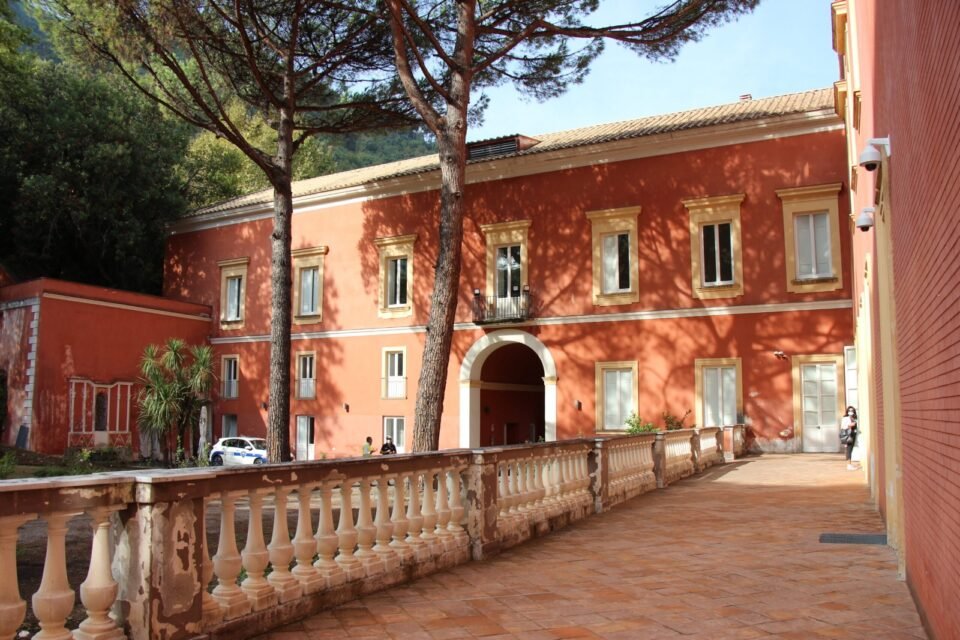

In the renovated Libero D’Orsi Archaeological Museum of Stabia, the rooms are duplicated and the collection of works from the villas in the Stabia area is enriched. There are 507 finds now on display, including wall paintings, marble furnishings, ceramic and bronze furnishings. The path is integrated with educational technologies and multimedia devices that implement the physical and cultural accessibility of the works and contents. The complex’s warehouses have also been valorised, according to a new concept aimed at making them no longer just places of conservation but also of use and research, open to the public.
The Museum has been hosted since 2020 in the spaces of the Royal Palace of Quisisana – a building that boasts a history of over seven centuries, then enhanced in the Bourbon era – as a space dedicated to the exhibition of numerous and prestigious finds from the Stabian territory, together with precious testimonies of life daily life, in particular that which took place in the Roman villas of relaxation of body and spirit, from activities and business, located in a panoramic position with a “view” of the Gulf of Naples.
Parco Regionale dei Monti Lattari


Parco regionale dei Monti Lattari (Lattari Mountains Nature Park) is one of 9 nature parks in the Campania region of southern Italy in the Apennines mountains. It’s incredibly hard to pick just one main feature in the park, rather it is its geographical location in general. It covers almost the entire Sorrento Peninsula between Naples and Salerno, known a bit more as the Amalfi Coast, after a village on its southern shore. From here, the main trail of the park, Sentiero degli Dei (The God’s Path), offers the best views. The peninsula literally goes far into the sea with many high mountains one after the other, including the no less famous rocky island of Capri completing one of the best landscapes in all of Italy. There are 78 named mountains in Parco regionale dei Monti Lattari . The highest and most prominent peak is Monte San Michele (Molare) of 1,444 m (4,738 ft).
Medieval Castle
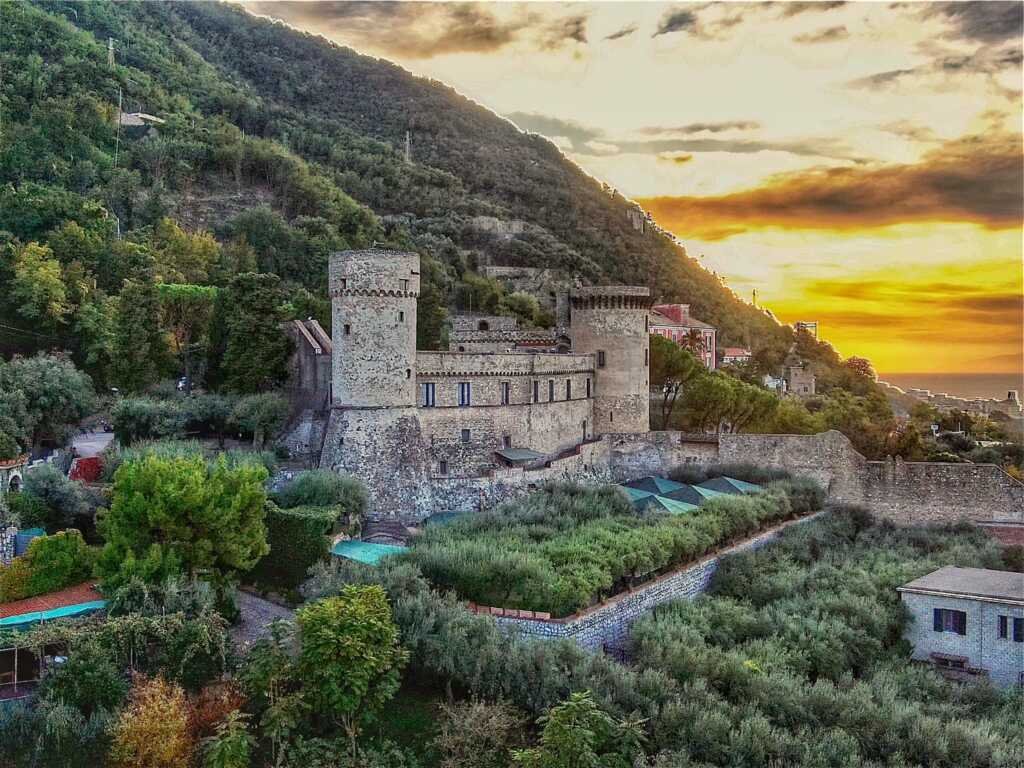

The Castle by the Sea, from which Castellammare derives its name, rises to 100 meters altitude above sea level while behind these are the imposing domes of rock (the foothills of Mount Faito) that rise vertically up to 650 m. The Castle was built to guard the narrow stretch of coast, between the inaccessible mountain and the sea, from which the army intended to penetrate and would have been able to pass the Sorrentine Peninsula.
Stone Beach


Stone Beach, locally known as Spiaggia Stone, is a picturesque beach located in the town of Castellammare di Stabia in the Naples region, at the foot of the iconic Mount Vesuvius. This beach has sandy shores and charming stones – pebbles. It offers a captivating view of the Bay of Naples, enhancing the overall beauty of the place. The beach is known for its cleanliness and is well equipped with a variety of amenities for visitors. Here you will find various restaurants with local cuisine.
Lido Lo Scoglio

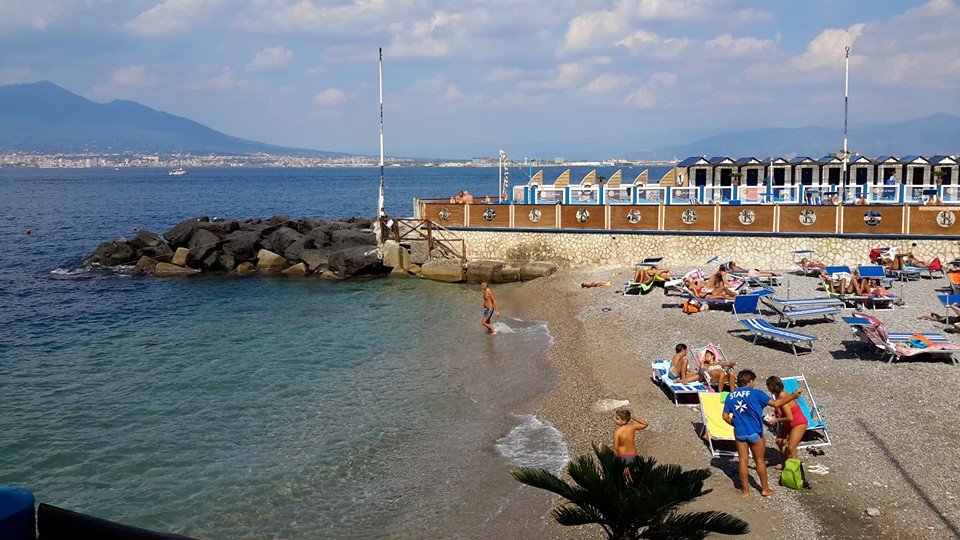
Lido Lo Scoglio, also known as Spiaggia Lo Scoglio, is a quiet beach located on Lungomare di Castellammare di Stabia. Its location on the Tyrrhenian Sea offers visitors a stretch of sand and gravel coast, known for its crystal clear waters, home to many species of fish. The beach is clean and, despite its popularity, is usually not crowded, providing a peaceful beach experience for all visitors. The beach offers a range of amenities and seaside restaurants.
Mount Monte Faito
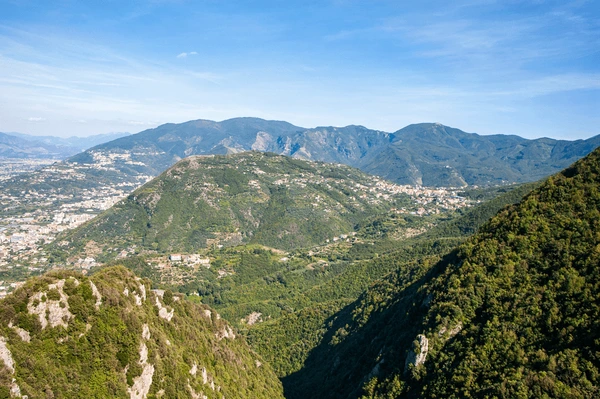
Mount Monte Faito is one of the peaks of a rather short range of the Monti Lattari mountains, which bisect the base of the Sorrento Peninsula in the southern region of the Bay of Naples. It is 1,131 meters high – directly by the sea.
Beech trees, chestnut trees and holm oaks cover its slopes making it a particularly pleasant place to walk in the hotter summer months. From afar you can easily make out its distinguished peaks Canino and Molare.
Faito offers several enjoyable hikes of varying length and difficulty. The simpler routes start from the cable car station, however there are much tougher options walking from or to Santa Maria del Castello, Moiano or even Agerola. The following is one of the most straightforward and can be simplified if you prefer.
Cable Car
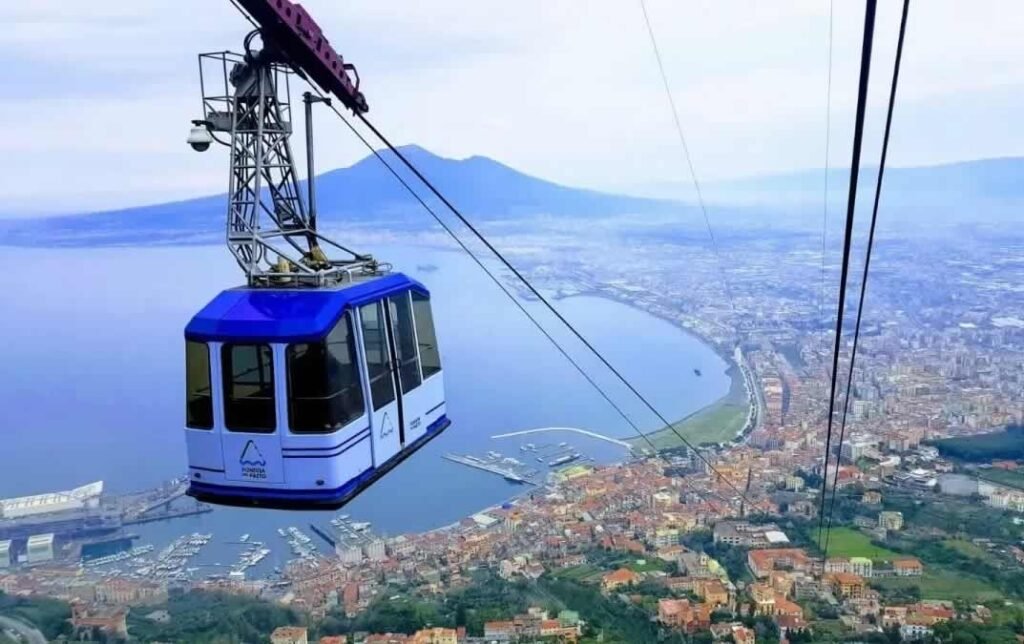
The Faito cable car connects the Castellammare Centro station, which is at sea level, to the square at an altitude of 1100 meters on the top of Mount Faito with a very panoramic ride among unique and wonderful views.

Villa Arianna


The villa was named after a large mythological fresco on the far wall of the triclinium, and the excavations conducted by the Swiss engineer Karl Weber between 1757 and 1762 almost completely unearthed it. At the time, the excavation method consisted in a series of underground explorations aimed at recovering objects deemed worthy, as opposed to a survey of the whole architectural context. Hence, the better preserved furnishings and frescoes were detached and brought to the Bourbon Museum at the Royal Palace of Portici.
Co-Cathedral of Castellammare di Stabia


The Co-Cathedral of Saint Mary of the Assumption and Saint Catellus is the Roman Catholic duomo or cathedral of Castellammare di Stabia . It is the main church in Castellammare di Stabia and it is co-cathedral of the Archdiocese of Sorrento-Castellammare. It was built in 1587 and was consecrated in 1893. Inside on display for worship is the statue of Saint Catello, the patron saint of the city.
Reggia di Quisisana

The Reggia of Quisisana, in Castellammare di Stabia, was built in the 13th century by the House of Anjou as a royal summer residence and sanatorium. Its current structure is due to the renovations carried out by Charles III of Bourbon (aka Charles III of Spain) between 1765 and 1790. The complex was built as a “hunting lodge and summer residence” and in the shape of an L, so that on one side it was possible to enjoy a magnificent view over the Gulf, and on the other it was better connected with Castellammare.

